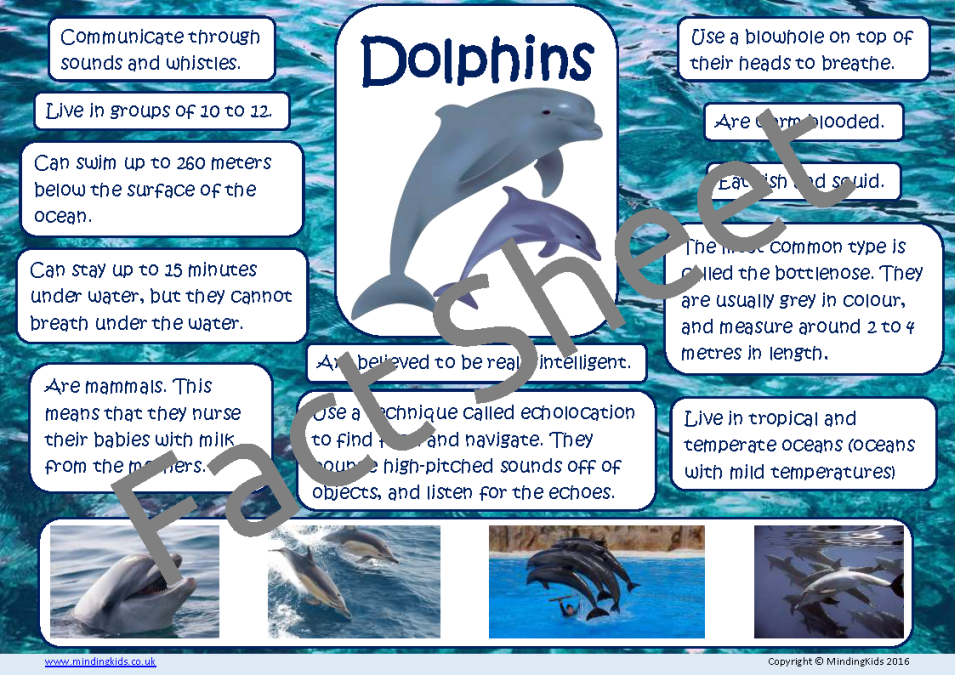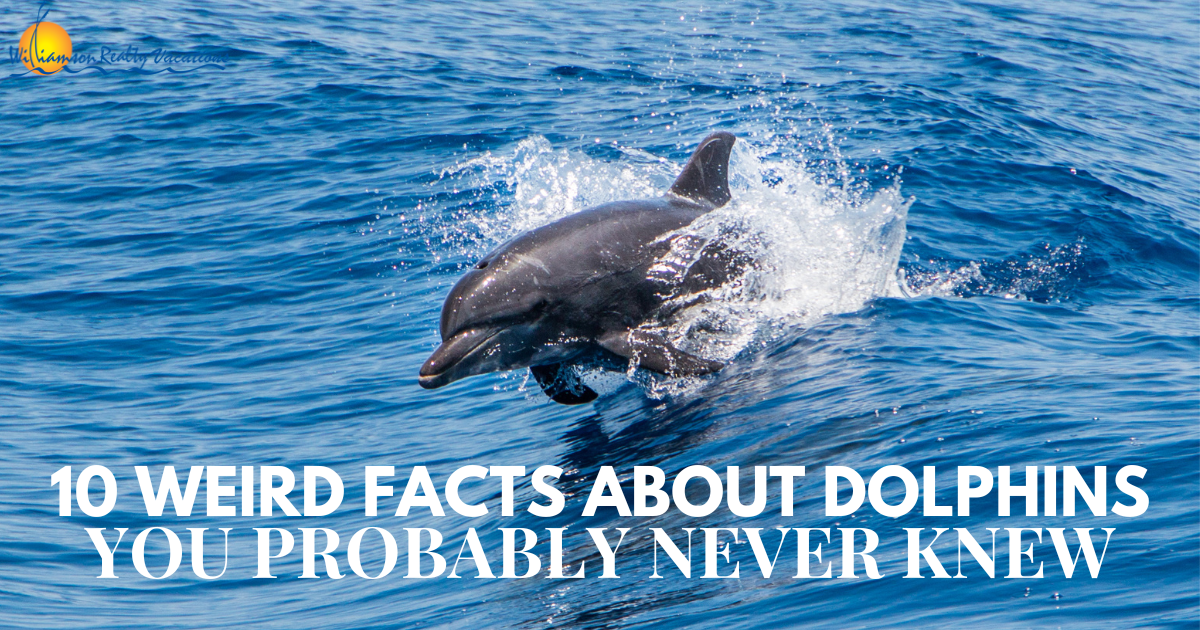Discover Fascinating Dolphin Facts That Will Certainly Surprise Your Close Friends
Wiki Article
Dive Into the Sea: Exciting Dolphin Truths for Sea Lovers
The world of dolphins offers a remarkable crossway of intelligence, social behavior, and ecological importance. With around 37 species, these marine creatures exhibit a range of remarkable characteristics that not just astound ocean enthusiasts but additionally emphasize their important role in aquatic ecological communities. From their complicated interaction approaches to their excellent analytical capabilities, dolphins test our understanding of animal intelligence. The pushing demand for conservation initiatives to safeguard these animals and their habitats increases important concerns concerning our obligation towards the sea's inhabitants. What ramifications do these factors hold for our communications with these impressive beings?Dolphin Types Diversity
Diversity is a characteristic of the dolphin family, encompassing a variety of species that display unique physical characteristics, habits, and habitats. The household Delphinidae, frequently referred to as oceanic dolphins, consists of about 37 species, each adapted to certain ecological niches. The bottlenose dolphin (Tursiops truncatus) is renowned for its knowledge and flexibility, flourishing in both seaside and open ocean settings.On the other hand, the whale (Orcinus whale), typically described as the killer whale, is the largest participant of the dolphin family and is identified by its striking black-and-white coloration. Orcas show complex social structures and hunting techniques, showcasing the behavioral diversity within the family. Various other species, such as the rewriter dolphin (Stenella longirostris), are noted for their acrobatic screens and choice for warmer waters, highlighting the adaptability of dolphins to numerous marine ecological communities.
Furthermore, river dolphins, consisting of the pink river dolphin (Inia geoffrensis), populate freshwater environments, even more illustrating the extensive habitats that dolphins inhabit. Dolphin Facts. This extraordinary variety not just improves marine ecological communities however also emphasizes the relevance of conservation initiatives to protect these remarkable creatures and their settings
Social Actions and Communication
The elaborate social actions and interaction methods of dolphins are essential elements of their existence, facilitating group communication and improving survival. These very smart aquatic mammals exhibit complicated social structures, typically developing cases that can vary from a few individuals to over a hundred. Within these teams, dolphins involve in behaviors such as cooperative searching, social play, and common protection, which cultivate strong bonds amongst participants.Dolphins utilize an advanced range of vocalizations, consisting of clicks, whistles, and body movement, to communicate info and share feelings. Their signature whistles work as one-of-a-kind identifiers, similar to names, enabling people to call out to one an additional. This vocal interaction is complemented by non-verbal signals, such as jumping, slapping the water, and integrated swimming, which further enhances their interactions.

Special Feeding Habits
Distinct feeding routines identify dolphins, showcasing their versatility and knowledge in different marine atmospheres. These aquatic mammals are understood for their diverse diet plans, which mostly include fish, squid, and shellfishes. Their hunting techniques can vary substantially, frequently tailored to the specific victim and ecological conditions.One notable method is cooperative searching, where dolphins work in groups to herd colleges of fish right into limited developments, making it simpler for people to catch their dish. This social actions not just enhances their feeding efficiency however also reinforces social bonds within the skin. In addition, dolphins have actually been observed utilizing a method called "fish-whacking," where they utilize their tails to stun or disorient fish, promoting navigate to this website less complicated capture.
An additional remarkable feeding routine is echolocation, which allows dolphins to identify target also in murky waters. By discharging audio waves and interpreting the returning mirrors, they can recognize the size, form, and area of their targets. This amazing capability emphasizes their adaptability in different environments, from superficial coastal locations to much deeper oceanic waters. On the whole, the distinct feeding behaviors of dolphins highlight their role as competent predators within the marine ecosystem, showing both knowledge and ingenuity.
Knowledge and Trouble Addressing
Their intelligence is noticeable in their problem-solving skills, social communications, and ability for discovering. Research has shown that dolphins can use tools, such as utilizing aquatic sponges to safeguard their rostrums while foraging on the seafloor.Additionally, dolphins display innovative interaction abilities, utilizing a complex system of clicks, whistles, and body movement. Dolphin Facts. This communication is critical for coordinating group tasks, such as searching and socializing, highlighting their capability to work jointly towards a typical goal. Their capacity to recognize abstract concepts, consisting of self-recognition in mirrors, additionally stresses their cognitive sophistication
In regulated researches, dolphins have revealed a capacity to solve puzzles and execute jobs that require both memory and crucial thinking. These communications show not just intelligence yet also a desire to engage with their environment in unique methods. On the whole, the cognitive prowess of dolphins places them among the most smart species in the world, cultivating a much deeper appreciation for their role in aquatic ecological communities.
Preservation and Environmental Effect
Preservation efforts intended at protecting marine environments are important for protecting dolphin populations and their environments. Dolphins are extremely sensitive to ecological adjustments, and their survival is delicately connected to the wellness of nautical ecological communities. Overfishing, air pollution, and climate change position considerable threats to both dolphins and their environments.Overfishing interrupts the food cycle, leading to a decrease in target varieties necessary for dolphin survival. Moreover, contaminants such as plastics and chemicals gather in aquatic environments, endangering dolphins through intake and bioaccumulation. Boosted water temperatures and ocean acidification, consequences of climate adjustment, even more threaten the fragile balance of marine communities, affecting dolphin reproduction and migratory patterns.
Preservation efforts, including the establishment of marine safeguarded areas (MPAs), play a vital role in protecting these intelligent animals. MPAs aid alleviate human effect, permitting environments to flourish and recover. Public understanding campaigns and area engagement are likewise vital, cultivating a culture of stewardship towards aquatic life. By prioritizing conservation efforts, we can guarantee that future generations appreciate the beauty and vitality of dolphins and the seas they occupy. Shielding aquatic ecological communities is not nearly conserving dolphins; it has to do with preserving the elaborate internet of life that maintains all of us.
Verdict
Dolphins exhibit the intricacy and richness of marine life with their varied varieties, elaborate social structures, and progressed dig this cognitive capabilities. As vital elements of aquatic communities, dolphins emphasize the requirement of recurring conservation efforts to safeguard their habitats.Various other types, such as the rewriter dolphin (Stenella longirostris), are kept in mind for their acrobatic displays and preference for warmer waters, highlighting the versatility of dolphins to different aquatic environments.
In general, the distinct feeding routines of dolphins highlight their duty as experienced predators within the aquatic environment, showing both intelligence and resourcefulness.
On the whole, the cognitive prowess of dolphins positions them amongst the most smart types on the planet, promoting a much deeper wikipedia reference gratitude for their role in marine ecological communities.

Report this wiki page